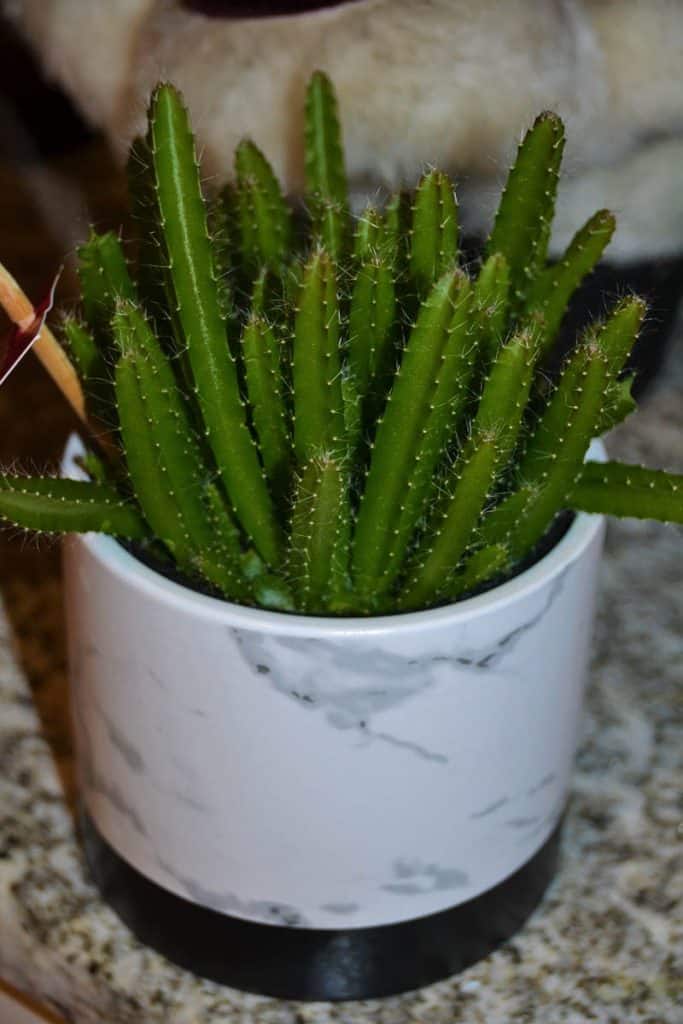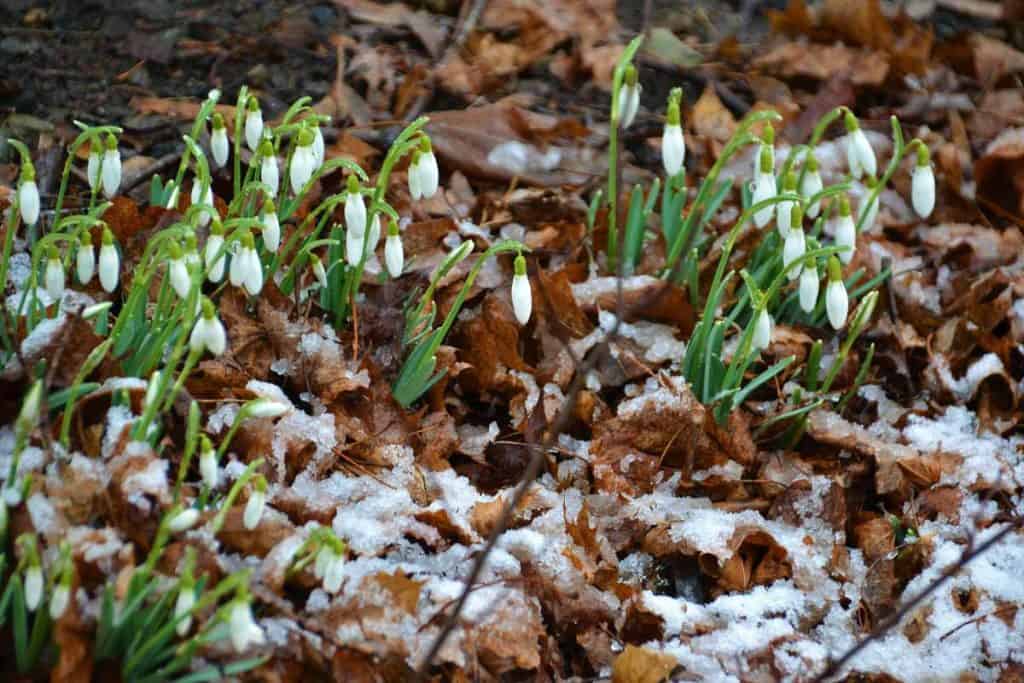Here’s what’s blooming in town this week to make your walks more enjoyable
Among the most popular indoor plants these days are succulents and cacti. Part of the reason is that they are very forgiving to those who forget to water their plants! Having evolved in desert or near desert environments, they have developed many adaptations, including an ability to store moisture in their cells. While some of the many species in each category can flower in home conditions, owners often enjoy their shapes and textures in every season whether or not they are in bloom. Some have fuzzy or waxy surfaces that help prevent evaporation of moisture in arid conditions. Leaves may be any shade of green, but some are variegated with white or yellow, or have reddish undertones to their foliage. They are sometimes grown as individuals in their own pots, but it is also possible to plant several different succulents that like similar growing conditions together in a large tray so they look like a tapestry of different colors and textures. The popularity of succulents these days goes far beyond actual plants though, since it is common to find plastic versions of many popular succulent varieties available as decorations.
One popular succulent for indoor gardens is a small rosette of fuzzy leaves called plush plant, chenille plant or Mexican hens and chickens (Echeveria pulvinata). The leaves are green but sometimes have reddish hairs at the edges. There are many species in the Echeveria genus, but all are succulents with a rosette arrangement of foliage and come from South and Central America or Mexico. Quite a few of these have become popular indoor plants because of their colors, shapes and textures, and like most succulents they don’t need frequent watering. They do like bright light, such as a sunny window, and seem to do well in average home temperatures. Plush plant is especially popular because of its warm and fuzzy appearance. Like hens and chickens (Sempervivum spp.), which many gardeners are familiar with outdoors in our climate, the plant develops taller stems when it blooms. In the case of the plush plant, the flowers are orange. Unlike the hens and chickens, however, they can produce flowers many times – hens and chickens rarely recover completely from blooming although there are usually younger offshoots nearby that can continue to live in the garden.
Members of the cactus family (Cactaceae) originated in the Americas. There are almost 2,000 species, spread across over 100 genera, in this prickly family. This family includes the tall saguaro (Carnegiea gigantea), a native of Arizona, Mexico and southern California, which is famously represented in Saugus by the old Hilltop Steakhouse sign on Route 1. Most have small sharp spines, which help protect them from predators and may also help collect dew in arid climates.
There are many cactus species that can be low-maintenance house plants. One of these is dragonfruit, also known as white fleshed pitahaya, queen of the night and strawberry pear (Selenicereus undatus, formerly Hylocereus undatus). While you may expect dragonfruit to more often be found in the produce aisle, it also makes a very charming houseplant. Dragonfruit is native to Mexico and the Honduras and is cultivated both for its tasty fruit and as an ornamental climbing vine. The stems have soft ribs and very small spines. Cactus fan Monique Todd is especially charmed by this plant’s texture. “Pet it!” she commanded, and indeed the plant is surprisingly soft, pliable and pettable, and even the spines are not especially sharp. Outdoors, dragonfruit is only hardy to zone 10, but it can climb as tall as 30 feet on a supporting structure or plant. The vines can produce fragrant night blooming white flowers, which develop into the bright pinkish fruit with white flesh and edible black seeds that can be found in markets.
Outdoors, there are indications that spring is on its way despite snow and cold snaps. Unlike last year, when I did not see any until March, it seems the “fair maids of February” are raising their heads before the month is over. These very early bulbs – usually called snowdrops (Galanthus nivalis) – are sometimes overlooked because they are the same color as the snow. The group shown above has spread over several decades in the garden of Allen Humphries in Cliftondale. The small white drooping flowers can bloom any time between December and March, depending on weather, and may continue to bloom for several weeks until temperatures become too warm.
Editor’s Note: Laura Eisener is a landscape design consultant who helps homeowners with landscape design, plant selection and placement of trees and shrubs, as well as perennials. She is a member of the Saugus Garden Club and offered to write a series of articles about “what’s blooming in town” shortly after the outbreak of the COVID-19 pandemic. She was inspired after seeing so many people taking up walking.







